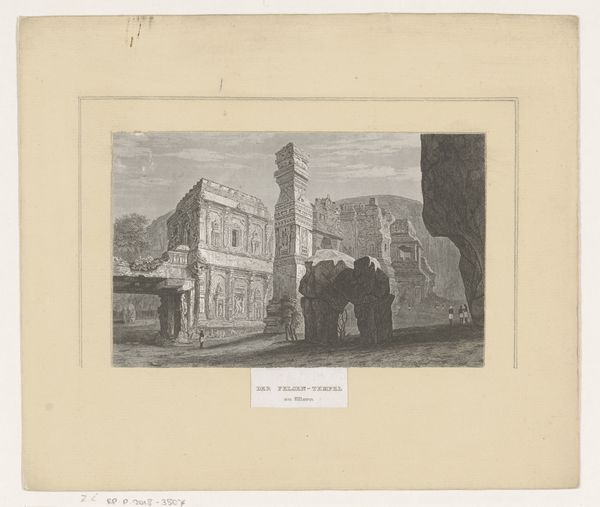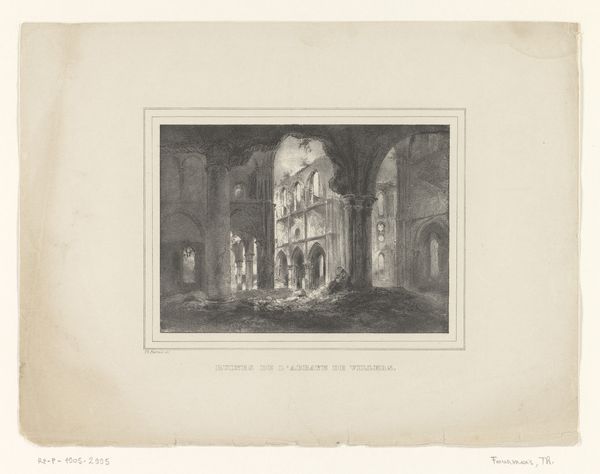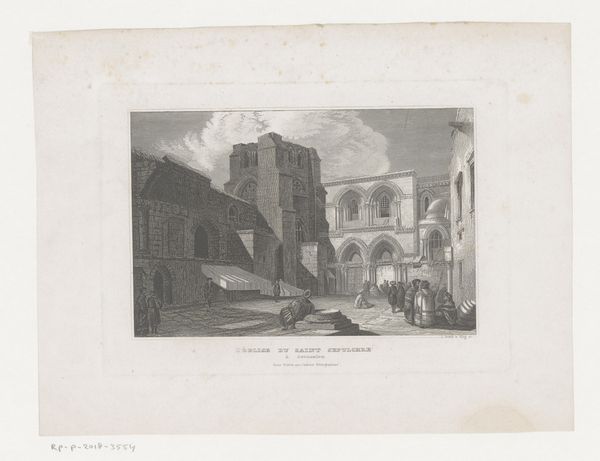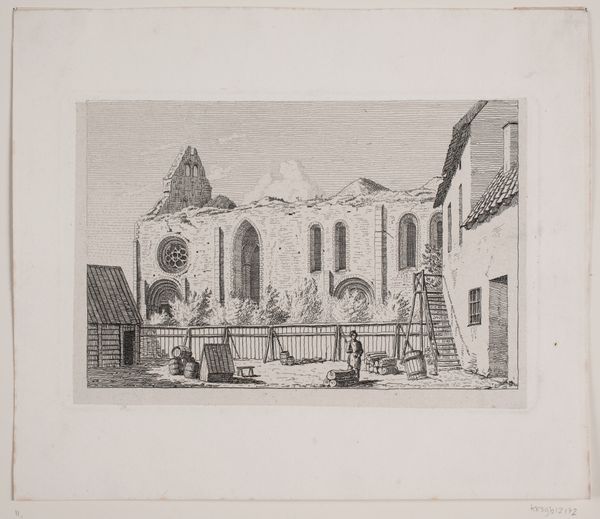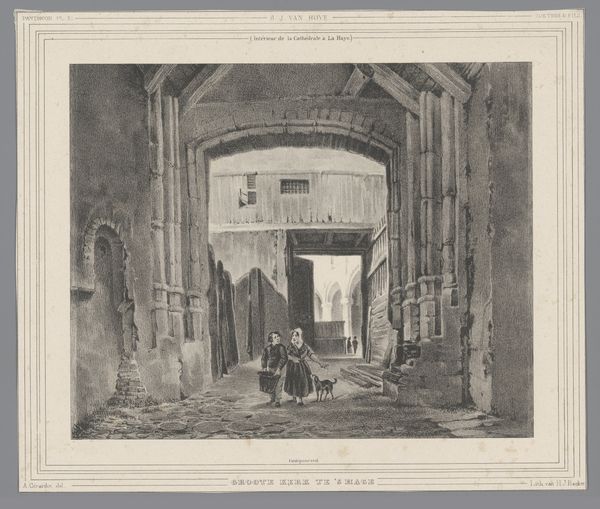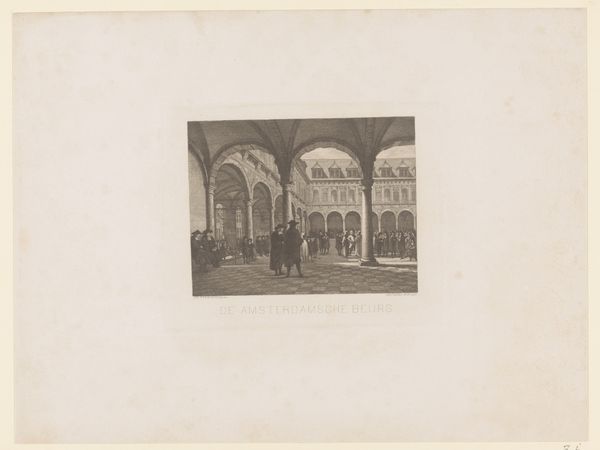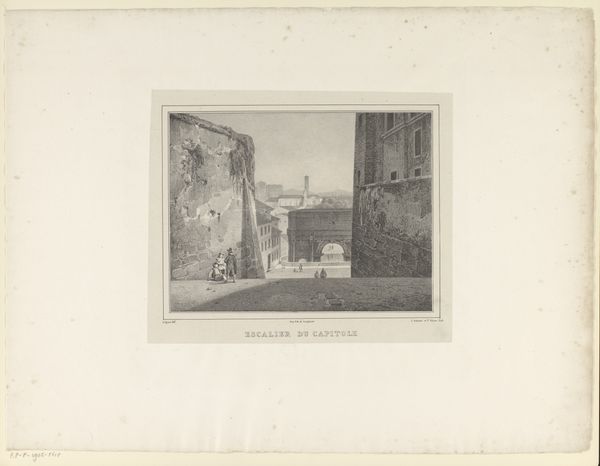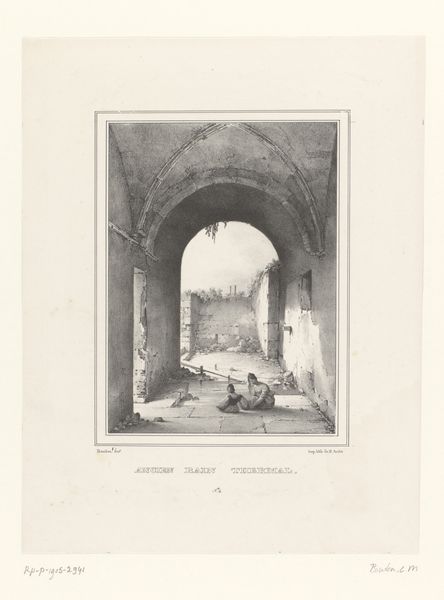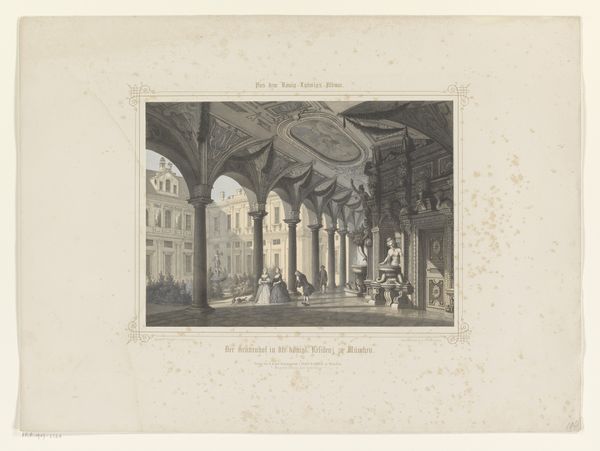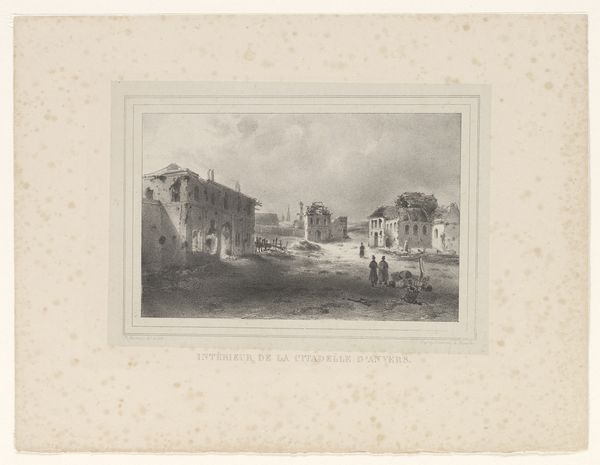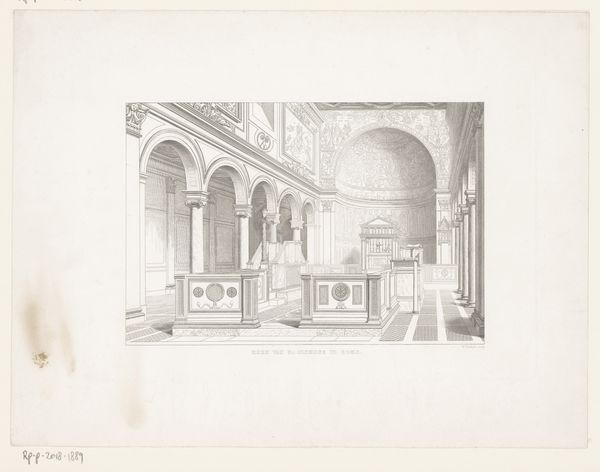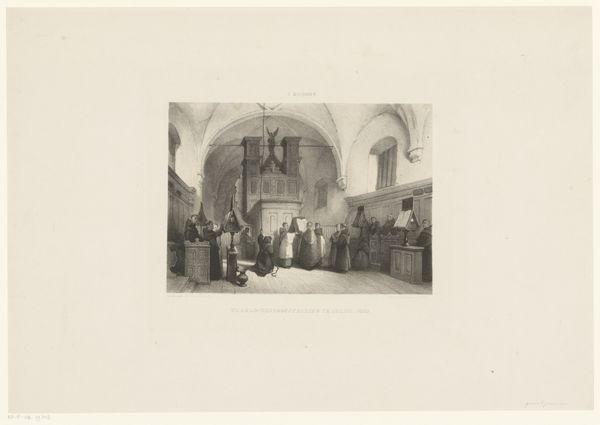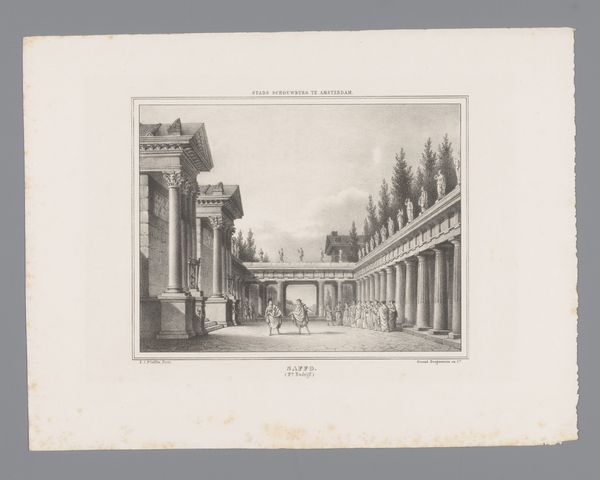
print, engraving, architecture
#
neoclacissism
# print
#
landscape
#
ancient-mediterranean
#
cityscape
#
engraving
#
architecture
Dimensions: height 358 mm, width mm
Copyright: Rijks Museum: Open Domain
Curator: Let’s take a look at this print: “Zicht op de ruïne van een huis in Pompeï,” or “View of the ruins of a house in Pompeii,” dating back to 1847, made by Charles-Claude Bachelier. Editor: My first thought is: wow, the serenity despite the obvious destruction. It feels staged, almost, with those figures populating the space. Are they just posing amidst the rubble? Curator: That’s interesting. Yes, we have these figures in the foreground, but the print is as much about them as it is about representing this particular moment in the rediscovery of Pompeii. The architectural rendering almost seems like a backdrop to these people. How do they contextualize or create relationships within and around the ruins themselves? Editor: You're right, it makes you consider the role of spectatorship then and now. Makes me think of those Instagram photos in front of tragedies; that strange intersection of grief, history, and individual identity. The muted tones really enhance the solemnity. Is that a style connected to the Neoclassical movement it belongs to? Curator: Exactly. Neoclassicism looked back to classical antiquity for its forms, and even its restrained emotional tone. Pompeii was becoming a key site in European cultural identity in the nineteenth century as empires were seeking their place within a perceived lineage. It spoke to notions of fallen empires. The interest lies, I believe, in connecting contemporary societal developments and art creation to political and aesthetic philosophies, especially in light of colonialism. How do we understand their gaze, their desire to capture or record a historical space with contemporary presence? Editor: A kind of power dynamic being played out in ink and paper. It reminds me how we're always layering our present anxieties and desires onto the past. We can never really see history without our own reflections muddled in. On second glance, the image feels unsettling in its quiet beauty. Curator: I concur, It encourages a critical look into the power structures at play that help dictate which histories are made visible and how we might rethink and reposition these historical sites moving forward in a more equitable lens. Editor: Beautiful and subtly jarring, even after all this time.
Comments
No comments
Be the first to comment and join the conversation on the ultimate creative platform.
